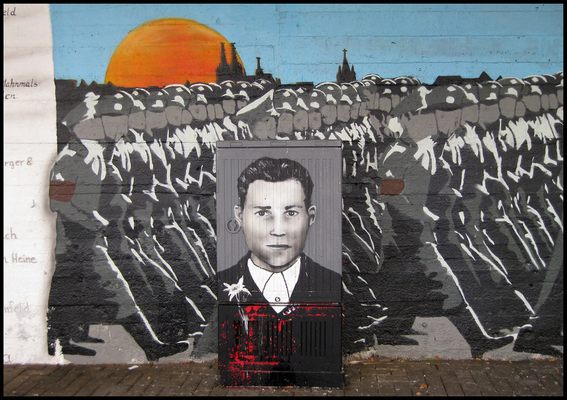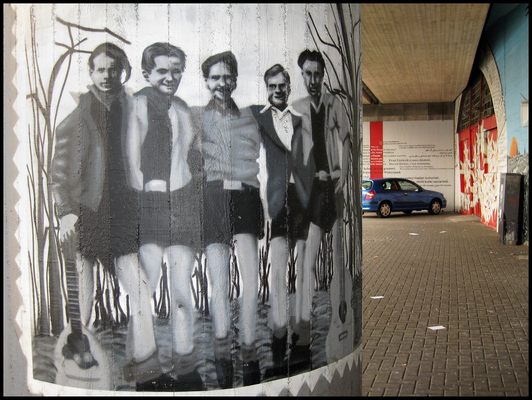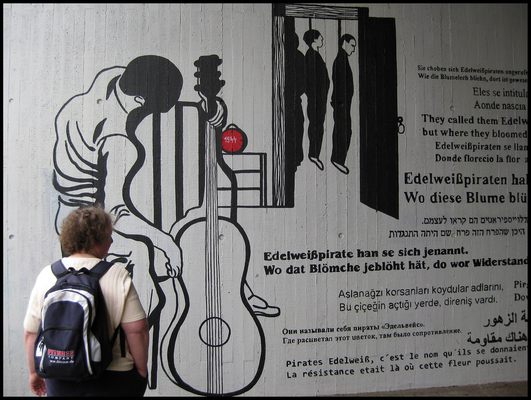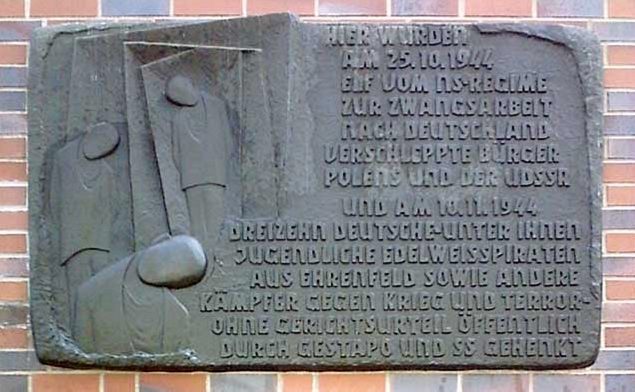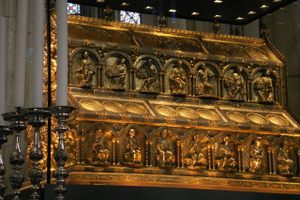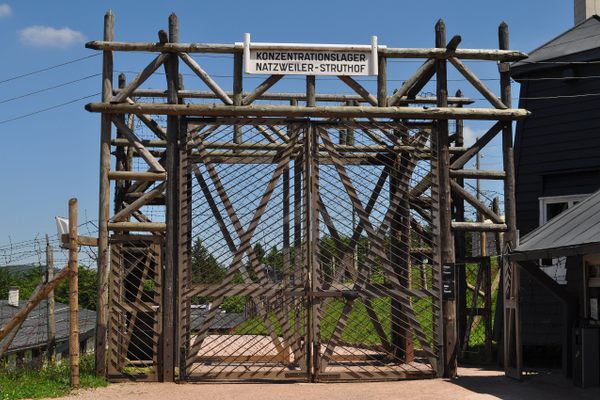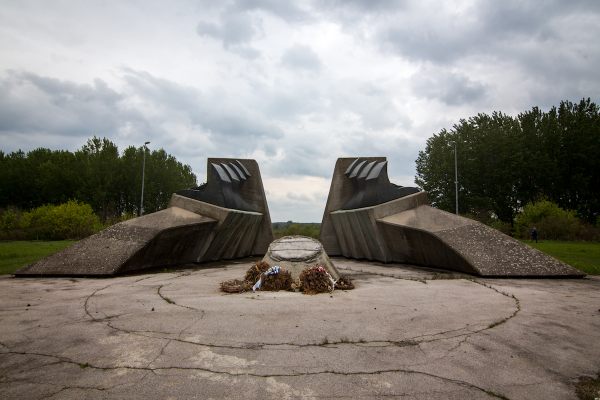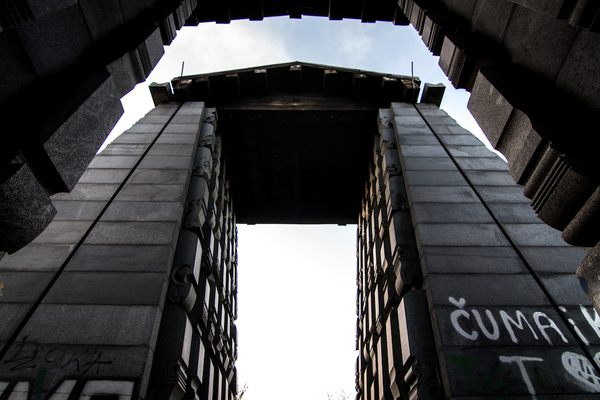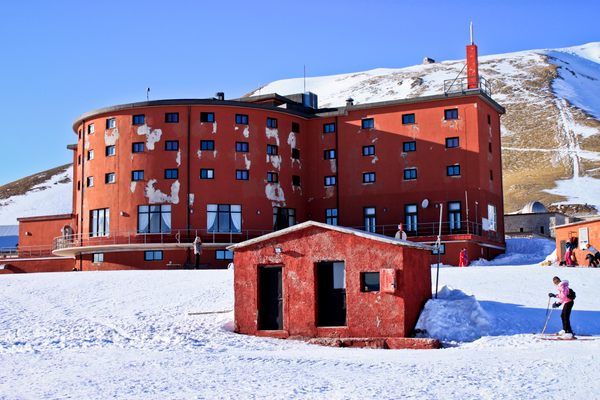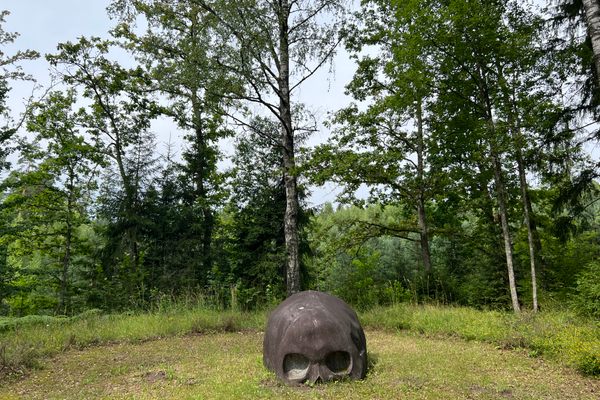About
Under the Ehrenfeld railway bridge stands a plaque and memorial mural that commemorates the heroic group known as the Edelweiss Pirates. The Edelweißpiraten, as they were called in Germany, was a youth subculture group that emerged in the 1930s.
The movement grew in response to Nazi totalitarianism, which included the indoctrination of children and teenagers into the Hitler Youth and the suppression of any perceived nonconformity. The social mores and behavior of the Edelweiss Pirates stood in direct contrast to the culture of the Hitler Youth, with the former advocating freedom of expression through music, dance, art, dress, and the intermingling of the genders. A popular line from a song of this period sung by the pirates sums up the ethos of this subculture: “Our song is freedom, love and life / We’re the Pirates of the Edelweiss."
However, the Edelweißpiraten were by no means a pacifist movement, nor were they practitioners of non-violent resistance. The group's slogan was in fact "Eternal War on the Hitler Youth." Pirates would ambush and disrupt patrols and meetings of the Hitler Youth brigades and brawl with them in the streets of most of Germany's major cities.
This rebellion clearly frustrated and even caused some concern for the Nazis who felt that their iron grip on the youth of Germany was slipping and which prompted one desperate official to write: "Every child knows who the Kittelbach Pirates are. They are everywhere; there are more of them than there are Hitler Youth... They beat up the patrols... They never take no for an answer."
By the time World War II officially began, the group's resistance activities had escalated from brawling with the Hitler Youth to sabotaging railways and munitions factories, giving shelter to escapees from concentration camps and army deserters, and assisting the spies and forces of the Allies.
In 1944, after the pirates assassinated a Nazi informant and their plan to blow up the headquarters of the Gestapo in Cologne was discovered, Himmler himself issued orders to infiltrate the group and arrest its ringleaders. In the aftermath of the Gestapo arrests, many pirates were to end up tortured or sent to concentration camps where they were classed as "political prisoners", "criminals" and/or "asocial elements."
The Nazis created a spectacle of terror in an attempt to scare the youth from joining the group by publicly executing 13 pirate ringleaders, who were hanged under the Ehrenfeld railway bridge. Today, this mural stands in memorial to them.
Related Tags
Know Before You Go
The memorial mural can be seen underneath the Ehrenfeld railway bridge for free.
Published
October 21, 2021

